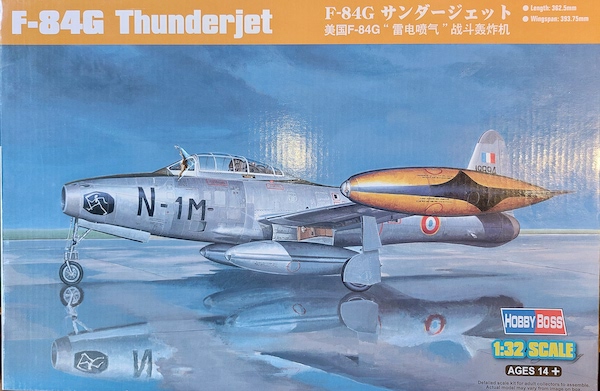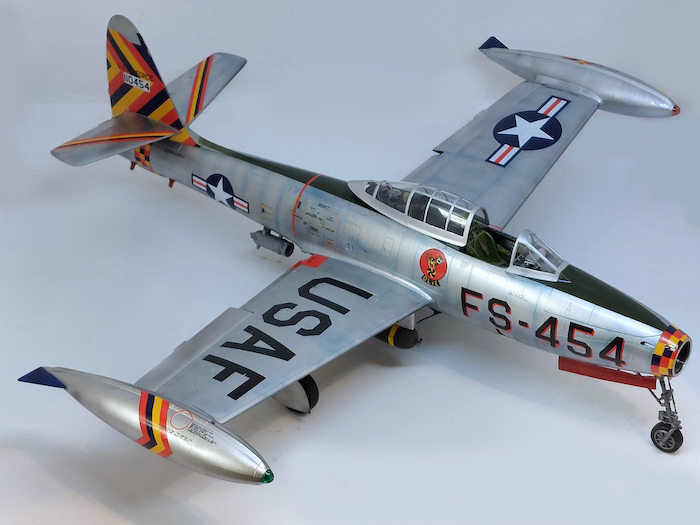
Full Review with Rob Ruscoe
Just before we get started, here’s a quick look at how it all turned out…

The F-84 was Republic Aviation’s design for a 1944 USAAF proposal for a jet powered day fighter. First flown in 1946, the aircraft entered service the following year but the aircraft was plagued by so many structural and engine problems, it was almost cancelled. After numerous modifications the aircraft was finally declared fully operational with the 1949 F-84D model. There were still structural failures of the wings occurring until the tip tanks were identified as being the culprit. A simple addition of a horizontal fin on the rear of the tanks which alleviated wing twist at high angles of attack and high G loading cured the problem. The J35 engine had also matured in reliability and greatly increased thrust and with the F-84G model, the USAF at last had a useful performer.
With the outbreak of the Korean War, the F-84G was initially utilised as escort to B-29 Superfortresses. With the entry of the Mig 15 to proceedings, the Thunderjet was totally outclassed by the Russian built, swept wing fighter and was replaced in the role by the F-86 Sabre.
The F-84 now found its niche as the USAFs primary strike aircraft flying over 86,000 sorties, destroying 60% of all ground targets in the conflict.
Production totalled 7,524 with over half of these going to other nations such as The Netherlands, Belgium, Iran, Italy, Norway, Portugal, France, Taiwan, Thailand, Turkey and Yugoslavia, the latter not retiring their aircraft until 1974.
The Kit…
I missed the opportunity to acquire this kit when it first appeared but have always wanted to build it. My chance came when one appeared on a modelling auction site which I was lucky enough to purchase at a very reasonable price. Opening the stout box revealed typical Trumpeter packing with each sprue individually bagged and the canopy and windscreen wrapped in padding for protection. In addition to a lot of plastic, there were three decal sheets for a choice of two aircraft, one USAF and one French. Also typical was the instruction booklet which looked to have a clear and logical build sequence. Three shaped nose weights were a welcome addition, but as I wanted to do an OOB build, the lack of PE seatbelts was a little disappointing. Surface detail looked very good with panel lines and rivets nicely restrained. There was no evidence of flash anywhere. Looking at the fuselage halves made it obvious this was going to be an impressive model when complete.